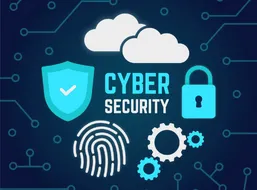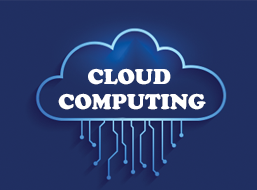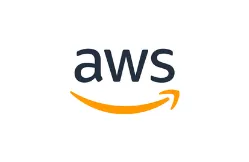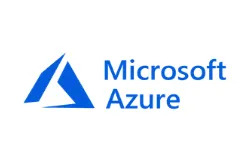ETHICAL HACKING INTERVIEW QUESTIONS AND ANSWERS
Here is a list of most frequently asked questions about Ethical hacking in technical interviews. These questions are prepared by experienced trainers of our institution. It will be useful for clearing the interviews and get a job in the networking industry. The questions are suitable for both freshers and professionals at any level. These questions are suitable for intermediates to somewhat advanced Ethical hacking professionals.
Here Are The Top Interview Questions And The Tips In Facing The Interview.
1. What is Ethical hacking?
Ethical hacking is when the individual is allowed to hack the systems with the permission of the merchandise owner to search out for weakness and later fix them.
2. What is an IP address?
An IP address is assigned to every device so that the device can be located to the Network.
3. What is the MAC address?
MAC address is a unique serial number assigned to every network interface on every device.
4. What are the common tools used by Ethical hackers?
Maltego, WireShark, NMAP, MetaSploit, John the Ripper.
5. What are the types of Ethical hackers?
Grey box hackers, Black box penetration testers, White box penetration testers.
6. What is the footprinting in Ethical hacking?
It refers to accumulating and uncovering as much information from the target network before gaining access to any network.
7. What is Brute Force Hack?
Brute force hack is a technique for the hacking password and get access to the system and network resources. It takes a lot of time.
8. What is the DOS (Denial of Service) attack?
DOS is a malicious attack on a network that is done by flooding the network with useless traffic. It doesn’t cause any theft of information or security breach. But it can cost the website owner a deal of money and time.
9. What are the common forms of DOS attacks?
- Buffer Overflow attacks
- Viruses
- Smurf attacks
- Teardrop attacks
- SYN attacks
10. What is SQL injection?
It is one of the techniques used to steal data from the organizations. It is a fault created in the application code.
11. What are the types of computer-based social engineering attacks?
Phishing, Baiting, Online scams.
12. What is Phishing?
Phishing means sending of false emails, chats, or websites toimpersonate real systems with the aim of stealing information from the original website.
13. What is the Burp Suite?
Burp Suite is an integrated platform used for attacking web applications. It consists of all the Burp tools required for attacking applications.
14. What are the tools that Burp Suite consists of?
- Proxy
- Spider
- Scanner
- Intruder
- Comparer
- Sequencer
- Decoder
- Repeater
15. What is Pharming?
Pharming is a technique in which the attacker compromises the DNS server(Domain Name System)or on the users to computers so that the traffic is directed to a malicious site.
16. What is Defacement?
In this technique, the attacker replaces the organization websites with different pages. It may contain the hackers' name, images, messages, and background music.
17. What is Keylogger Trojan?
Keylogger Trojan is malicious software that can monitor your keystroke, log them into a file and send them off to remote attackers.
18. What is Enumeration?
It is the process of extracting machine name, user name, Network resources, shares, and services from the system.
19. What is NTP?
Network Time Protocol or NTP is used to synchronize the clocks of networked computers.
20. What is MIB?
Management Information Base or MIB is the virtual database that contains all the formal descriptionsof the Network objects that can be managed using the SNMP.
21. What are the types of Password cracking techniques?
The types of Password cracking techniques are,
- Attack Brute forcing
- Attack hybrids
- Attack Syllables
- Attack rules
22. What are the types of hacking stages?
The types of hacking stages are,
- Gaining access escalating
- Privileges executing
- Applications hiding
- Files covering tracks
23. What is CSRF?
CSRF or Cross-Site Request Forgery is an attack from the malicious software that will send a request to the web application that a user has already authenticated from a different website.
24. How can we prevent Cross-Site?
To prevent CSRF, you can append an unpredictable challenge token of each request and associate them with the user's session. It will ensure the developer that the request is from a valid source.
25. What is Cowpatty?
Cowpatty is implemented on an offline dictionary attack against WPA/WPA2 networks using a PSK based verification.
26. Why is Python used for hacking?
Most popularly used scripting language for hacking is Python. It has some pre-assembled libraries that give some intense functionality and it has some critical highlights that make it valuable for hacking.
27.What are the types of Password attacks?
Guessing, birthday attacks, stealing, dictionary attacks, brute force attacks, rainbows tables, hybrid password attacks.
28. What is the difference between hacking and ethical hacking?
Hacking is the illegal way of accessing a system or in simple terms, unauthorized access. Ethical hacking is the legal way to access the system or penetration testing.
29. Why ethical hacking?
To find flaws and vulnerabilities and to determine the risk to the organization.
30. What are the different types of hackers?
Black cats and white cats. Black cats use their skill for offensive purposes. But white cats use their skill for defending.
31. What is Trojan?
It is a malicious code that harms the system.






.webp)
